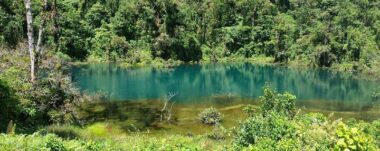What is the climate like in Costa Rica?
Costa Rica’s climate refers to the set of weather elements that define the heterogeneous climatic features of the Costa Rican territory. In general, the country is located in the neotropical region, so it has tropical characteristics, with two well-defined seasons all year round: the dry season (also called summer) and the rainy season (also called winter). In addition, in the middle of the latter, there is occasionally a phenomenon called Veranillo de San Juan, when the climate returns to dry season for a short period of time.
However, the topography of the country is extremely divergent, with the presence of mountains, valleys and plains in a fairly small territory, which considerably alters all the bioclimatic and florifaunistic characteristics of Costa Rica, and also generates the particular phenomenon of microclimates that are distinctive in the national landscape.
Likewise, due to its tropical location, the temperature does not suffer drastic variations throughout the seasonal regime. However, at the end of the year and due to its location in the Northern Hemisphere, the nation is affected by seasonal changes, when temperatures tend to drop considerably due to the northern winds in the highest parts of the country. Likewise, day length is affected during the solstices and equinoxes.
The rainfall regime is occasional in certain regions of the country, while it is constant in humid areas such as the Caribbean. On the other hand, from time to time, it presents some disparities, mostly as effects of the global alternations called El Niño and La Niña, as well as tropical waves and the hurricane season, causing droughts in some regions (especially in the Pampa Guancasteca) and in others pronounced increases in rainfall with subsequent floods or avalanches (almost always in the plains and coasts). On the other hand, winds vary significantly in intensity throughout the territory, while allowing the establishment of wind farms, especially in the higher elevations.
In Costa Rica, the climate has been monitored, studied and recorded for 130 years by the National Meteorological Institute (IMN), attached to the Ministry of Environment and Energy (MINAE) and located in the city of San José.
Dry Season
The dry season is colloquially called summer, because it is its seasonal equivalent, in which there is a considerable reduction in rainfall but no increase in temperature because it is equivalent to the coldest months: December to March, except in the Caribbean. During this period, precipitation even disappears in the driest regions, which generates long-term drought problems.
The dry season has a regular duration of less than 6 months, and occurs from the beginning of December to the end of April. The hottest period is April-May, with less than 5 days of rain, and the average temperature is 23 degrees Celsius. On the other hand, the highest rainfall is recorded during the months of September and October.
A separate case occurs in the months of December and January, which are in fact very cold months, but belong to the dry season because they have a considerably reduced precipitation regime, with an average temperature or 20 degrees and at least 2 days of rain.
Rainy season
Similarly, the rainy season is called winter, and is a season with slight decreases in temperature and large increases in the precipitation regime and wind speed, generally throughout the territory. During this season there are occasional floods, which occur after the overflowing of rivers and streams, which are out of their course due to heavy rains.
The rainy season starts at the beginning of May and ends at the end of November, making it the longest season with a regular duration of more than 6 months. During this period, the highest rainfall occurs in September with more than 355.1 mm of rainfall per month, while between July and October there are more than 20 rainy days per month.
In November, although the heavy rainfall does not completely disappear, the dry conditions of the holiday season begin to be felt, as there is a reduction in the number of rainy days, which are limited to less than 10 per month, while the temperature and the amount of rainfall remain regular.
Finally, during the last days of June in some regions, a particular phenomenon called Veranillo de San Juan occurs, in which for a short time the weather conditions return to summer conditions, ceasing the constant rainfall and registering slight increases in temperature.
Source: Wikipedia





